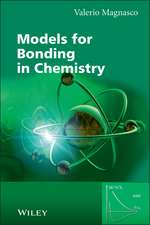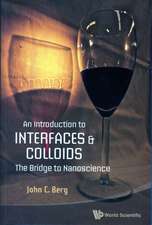Tunneling Spectroscopy: Capabilities, Applications, and New Techniques
Editat de Paul Hansmaen Limba Engleză Paperback – 16 feb 2012
Preț: 399.29 lei
Nou
Puncte Express: 599
Preț estimativ în valută:
76.43€ • 83.05$ • 64.24£
76.43€ • 83.05$ • 64.24£
Carte tipărită la comandă
Livrare economică 21 aprilie-05 mai
Preluare comenzi: 021 569.72.76
Specificații
ISBN-13: 9781468411546
ISBN-10: 1468411543
Pagini: 516
Ilustrații: XVIII, 496 p.
Dimensiuni: 152 x 229 x 27 mm
Greutate: 0.68 kg
Ediția:Softcover reprint of the original 1st ed. 1982
Editura: Springer Us
Colecția Springer
Locul publicării:New York, NY, United States
ISBN-10: 1468411543
Pagini: 516
Ilustrații: XVIII, 496 p.
Dimensiuni: 152 x 229 x 27 mm
Greutate: 0.68 kg
Ediția:Softcover reprint of the original 1st ed. 1982
Editura: Springer Us
Colecția Springer
Locul publicării:New York, NY, United States
Public țintă
ResearchCuprins
1. Introduction.- 1. Why? Why? Why?.- 2. A Water Analogy for Tunneling Spectroscopy.- 3. Strengths of Tunneling Spectroscopy.- 4. Weaknesses of Tunneling Spectroscopy.- 5. General Experimental Techniques.- 6. Conclusions.- References.- 2. The Interaction of Tunneling Electrons with Molecular Vibrations.- 1. Introduction.- 2. Elastic Tunneling.- 3. Inelastic Tunneling.- 4. Conclusions.- References.- 3. Tunneling Spectroscopies of Metal and Semiconductor Phonons.- 1. Introduction.- 2. Threshold Spectroscopy of Normal State Phonons.- 3. Superconductive Tunneling: The Effective Phonon Spectrum ?2F(?).- 4. Proximity Tunneling Methods.- 5. Conclusions.- References.- 4. Electronic Transitions Studied by Tunneling Spectroscopy.- 1. Introduction.- 2. Experimental.- 3. Results.- 4. What Are Not Electronic Transitions?.- 5. Conclusions.- References.- 5. Light Emission from Tunnel Junctions.- 1. Introduction.- 2. Planar Tunnel Junctions and Surface Polaritons.- 3. Light Emission from Tunnel Junctions: The Theoretical Picture and Examples.- 4. Conclusions.- References.- 6. Comparisons of Tunneling Spectroscopy with Other Surface Analytical Techniques.- 1. Introduction.- 2. Major Surface Analytical Techniques: A Brief Survey.- 3. The Application of Modern Surface Analytical Techniques to the Characterization of Carbon Monoxide Adsorbed on Alumina Supported Rhodium.- 4. Conclusions.- References.- 7. The Detection and Identification of Biochemicals.- 1. Introduction.- 2. IET Spectra of Biological Compounds.- 3. Surface Adsorption and Orientation Effects on the IETS of Nucleotides.- 4. uv Radiation Damage Studies with IETS.- 5. Conclusions.- References.- 8. The Study of Inorganic Ions.- 1. Introduction.- 2. Why Study Inorganic Ions by Tunneling Spectroscopy?.- 3. Doping Techniques andInsulator Surfaces.- 4. Solution Phase versus Gas Phase Adsorption.- 5. Representative Spectra.- 6. The Role of Counterions.- 7. Oxidation and Reduction Processes.- 8. What’s Next?.- 9. Conclusions.- References.- 9. Studies of Electron-Irradiation-Induced Changes to Monomolecular Structure.- 1. Introduction.- 2. Present State-of-the-Art Experiments.- 3. Suggestions for Future Experiments.- 4. Conclusions.- References.- 10. Study of Corrosion and Corrosion Inhibitor Species on Aluminum Surfaces.- 1. Introduction.- 2. Corrosion of Aluminum by Carbon Tetrachloride.- 3. Inhibition of Corrosion by Formamide.- 4. Corrosion of Aluminum by Trichloroethylene.- 5. Corrosion Inhibitors for Aluminum in Hydrochloric Acid.- 6. Conclusions.- References.- 11. Adsorption and Reaction on Aluminum and Magnesium Oxides.- 1. Introduction.- 2. Clean Aluminum Oxide.- 3. Dirty Aluminum Oxide.- 4. Doped Aluminum Oxide.- 5. Clean Magnesium Oxide.- 6. Doped Magnesium Oxide.- 7. Technical Postscript.- 8. Conclusions.- References.- 12. The Structure and Catalytic Reactivity of Supported Homogeneous Cluster Compounds.- 1. Introduction.- 2. Experimental Procedures.- 3. Results and Discussion.- 4. Conclusions.- References.- 13. Model Supported Metal Catalysts.- 1. Introduction.- 2. Special Techniques.- 3. Experimental Results.- 4. Future Areas of Study.- 5. Conclusions.- References.- 14. Computer-Assisted Determination of Peak Profiles, Intensities, and Positions.- 1. Introduction.- 2. Measurement of Tunneling Conductance and Its Derivatives.- 3. Interfacing with a Computer.- 4. Peak Profile Determination.- 5. Data Handling.- References.- 15. Infusion Doping of Tunnel Junctions.- 1. Introduction.- 2. Experimental Description of Infusion.- 3. Experiments Relating to Physical Mechanisms of Infusion.-4. Examples of Molecules Infused.- 5. Applications of Infusion.- 6. Conclusions.- References.- 16. Vibrational Spectroscopy of Subnanogram Samples with Tunneling Spectroscopy.- References.












